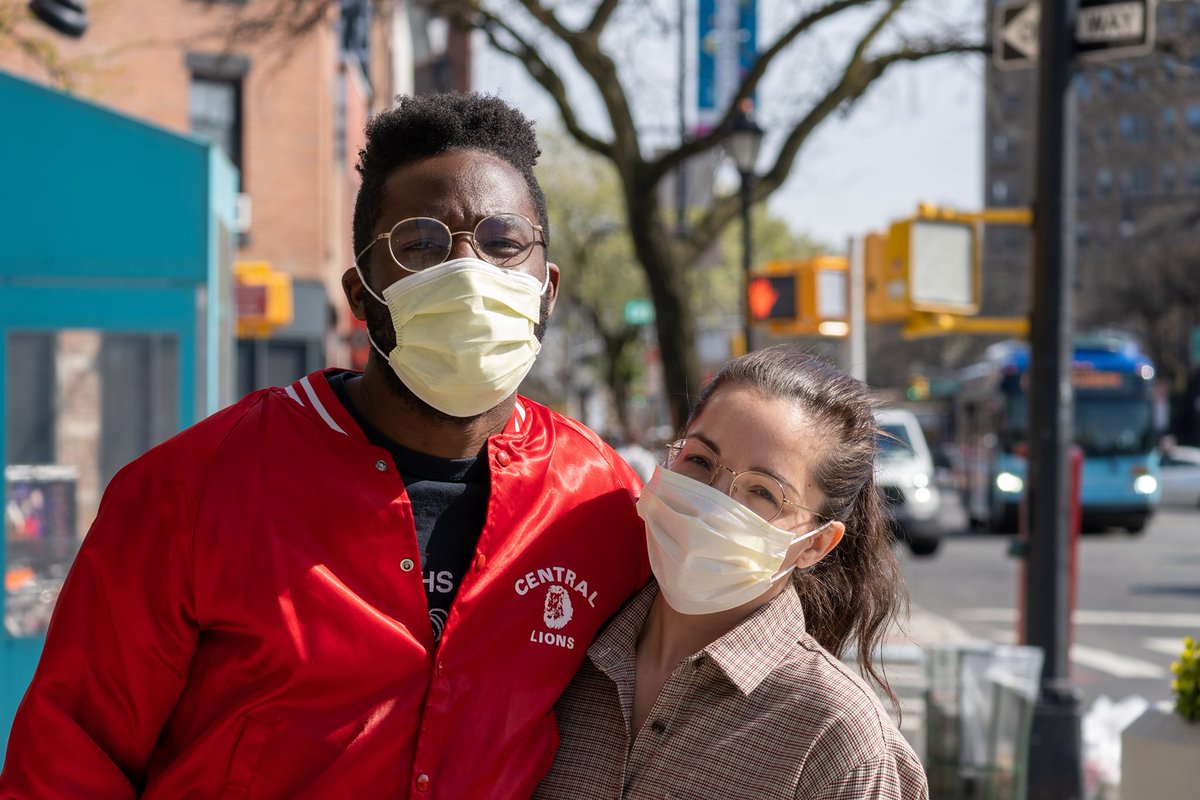1/ Q: I wear glasses. How can I prevent them from fogging up when I wear my mask?
A: When warm air hits cool surfaces, there's condensation. When you are wearing 😷, your warm breath sneaks up through the top & hits the colder surface of your lenses, creating condensation.
A: When warm air hits cool surfaces, there's condensation. When you are wearing 😷, your warm breath sneaks up through the top & hits the colder surface of your lenses, creating condensation.

2/ Here's tips to prevent/reduce this irritating fog:
1️⃣ TIGHTEN MASK FIT: If the seal across the top of your mask is not tight, your breath will more easily escape. Select a mask with a snug nose bridge. You can also use double-sided tape across your nose to secure the fit.
1️⃣ TIGHTEN MASK FIT: If the seal across the top of your mask is not tight, your breath will more easily escape. Select a mask with a snug nose bridge. You can also use double-sided tape across your nose to secure the fit.
3/ 2️⃣ WASH YOUR GLASSES WITH SOAPY WATER/USE A DEFOGGING PRODUCT: After you wash your glasses with soapy water, let them air dry, or gently wipe them with a clean microfiber cloth. The remnant soap leaves a thin layer that serves as a fog barrier.
4/ Other defogging wipes & sprays are also available. We recommend that you talk with your optician before applying any product to your glasses. (For ex., don't use baby shampoo, shaving cream, toothpaste, or defogging products designed for cars.)
5/ 3️⃣ PLACE YOUR GLASSES ON TOP OF THE MASK: By resting your glasses on the top of the fabric of the mask, you help secure the seal reducing air flow up toward your eyes. Or adjust your glasses so they sit a little further from your face.
6/ 4️⃣ BREATHE DOWN: If you hold your upper lip out over your lower lip & breath downwards, this will help direct air away from the top of the mask to prevent your glasses fogging. It's a little awkward, but it's an option in a pinch.
7/ POSSIBLE GLASSES PROTECTION?
There's recent data from Suizhou, China indicating that people who regularly wear glasses were less likely to be hospitalized for COVID-19. Out of 276 hospitalized #COVID19 patients, only 6% of them wore glasses for 8 or more hours a day.
There's recent data from Suizhou, China indicating that people who regularly wear glasses were less likely to be hospitalized for COVID-19. Out of 276 hospitalized #COVID19 patients, only 6% of them wore glasses for 8 or more hours a day.
8/This is much smaller than one would expect from the region where 30% of similarly aged people wear glasses. While the study's sample size is small/not conclusive, one plausible reason is that lenses protect against exposure to the virus through respiratory droplets & aerosols.
9/ If you don't typically wear glasses, you can always throw on sunglasses or a face shield (on top of your mask). The Nerdy Girls support adding layers of protection.
• • •
Missing some Tweet in this thread? You can try to
force a refresh









